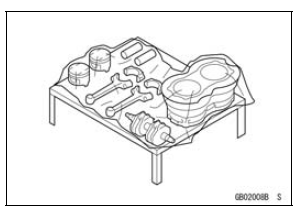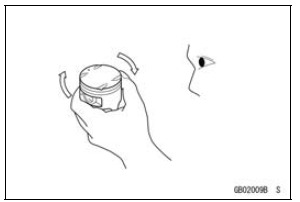

After all the parts including subassembly parts have been cleaned, store the parts in a clean area. Put a clean cloth or plastic sheet over the parts to protect from any foreign materials that may collect before re-assembly.

Inspection
Reuse of worn or damaged parts may lead to serious accident.
Visually inspect removed parts for corrosion, discoloration, or other damage. Refer to the appropriate sections of this manual for service limits on individual parts. Replace the parts if any damage has been found or if the part is beyond its service limit.

 Cleaning Vehicle before Disassembly
Cleaning Vehicle before Disassembly Replacement Parts
Replacement PartsFront Master Cylinder Installation
Apply silicone grease to the sliding surface of the brake
lever pivot bolt.
Tighten:
Torque - Brake Lever Pivot Bolt: 1.2 N·m (0.12 kgf·m, 11
in·lb)
Brake Lever Pivot Bolt Nut: 5.9 N·m (0.60 kgf·m,
52 in·lb)
Assemble the reservoir [A] and the bracket [B] as shown
in the figu ...
Engine Oil Change
Situate the motorcycle so that it is vertical after warming
up the engine.
Remove the engine oil drain bolt [A] to drain the oil.
The oil in the oil filter can be drained by removing the filter
(see Oil Filter Replacement).
Replace the drain bolt gasket [B] with a new one.
Tighten t ...
Air Suction Valve Installation
Install the air suction valve so that opening [A] of the reed
faces downward.
Apply a non-permanent locking agent to the threads of
the air suction valve cover bolts [A], and tighten them.
Torque - Air Suction Valve Cover Bolts: 9.8 N·m (1.0 kgf·m,
87 in·lb)
...